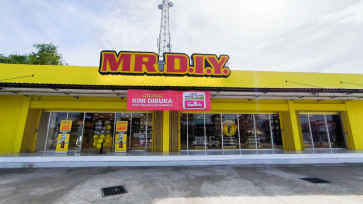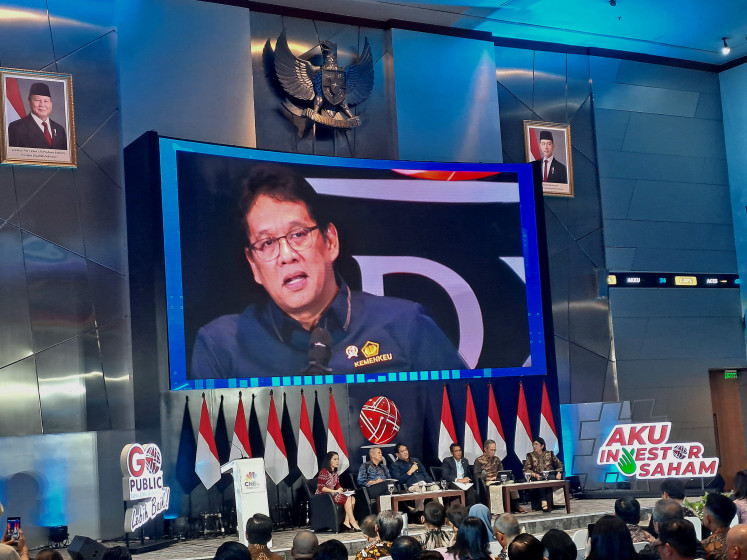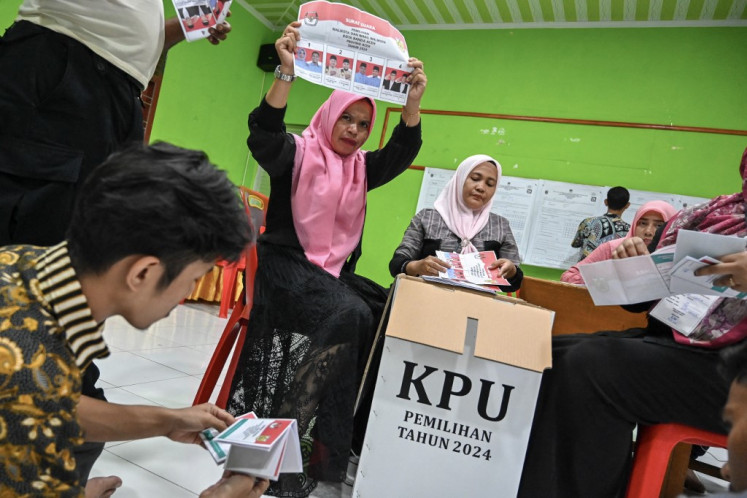Popular Reads
Top Results
Can't find what you're looking for?
View all search resultsPopular Reads
Top Results
Can't find what you're looking for?
View all search resultsOjol drivers say 20% fee cut OK if it pays them back: Survey
Ojol drivers have been demanding that the government cap commission fees at 10 percent, including during their latest protest on Wednesday under the banner “179.”
Change text size
Gift Premium Articles
to Anyone
O
nline motorcycle taxi (ojol) drivers remain divided over commission fees charged by ride-hailing platforms. However, once they understand the deductions, most prioritize higher booking volumes over commission rates, a new survey shows.
A phone survey by Tenggara Strategics, conducted on Tuesday and Wednesday among 1,052 Grab drivers in Greater Jakarta, found that commission deductions top drivers’ concerns alongside income levels, operational costs such as fuel and vehicle maintenance and the lack of health or accident insurance.
Currently, ojol drivers typically face a 20 percent platform fee. Ride-hailing companies say the deduction is unavoidable due to rising operational costs, including marketing, while also funding innovations and safety features.
Ojol drivers have been demanding that the government cap commission fees at 10 percent, including during their latest protest on Wednesday under the banner “179.” One of their key demands highlights how commission fees directly affect their net income.
Survey results, however, show that 54 percent of drivers would accept a 20 percent commission cut if it came with tangible benefits such as promotional support, health or accident insurance or vehicle maintenance subsidies rather than a 10 percent deduction without benefits. This indicates that while drivers are sensitive to the commission rate, they also weigh the broader advantages offered.
A consistent finding is that 82 percent of respondents strongly prefer a 20 percent deduction paired with a high volume of orders over a 10 percent deduction with fewer orders.
Interestingly, 18 percent of respondents had previously worked with platforms applying a 10 percent commission. Among them, 43 percent said their earnings were roughly the same between the 10 percent and 20 percent platforms, while 42 percent said they earned less under the 10 percent platform.
Read also: Unrest lays bare grievances over social mobility, equality
Beyond commission rates, drivers have long demanded recognition as employees rather than partners. However, shifting all drivers to permanent employee status could reduce flexibility and prompt platforms to impose stricter hiring criteria, potentially excluding many.
The survey also reveals that 52 percent of drivers value flexibility most, seeing partnership status as preferable to permanent employment. Another 33 percent said incentives, such as BPJS accident insurance, combined with partner status mattered more than employment type. Only 15 percent said they wanted permanent employee status outright.
Demographically, most respondents were aged 31–40, followed by 21–30 and 41–50. Many began driving between three and six years ago, during or shortly after the COVID-19 pandemic, while a significant share entered the profession within the past two years. This pattern suggests ojol driving has served as a safety net for workers hit by pandemic-related and more recent layoffs.
According to the Manpower Ministry, layoffs increased 32.11 percent in the first semester of 2025 compared with the same period last year, from 32,064 to 42,385 workers. Only a smaller proportion of surveyed drivers reported longer tenures in the profession.










